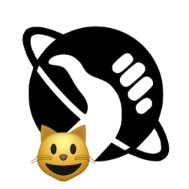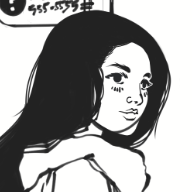
fde101
-
Posts
4,968 -
Joined
-
Last visited
Reputation Activity
-
 fde101 got a reaction from Bryan Rieger in PLEASE: New features in the UI, not just hotkeys or mouse modifiers!
fde101 got a reaction from Bryan Rieger in PLEASE: New features in the UI, not just hotkeys or mouse modifiers!
The option+click to pick the key object should really be listed in the help bar across the bottom of the window too.
-
 fde101 got a reaction from Brian_J in PLEASE: New features in the UI, not just hotkeys or mouse modifiers!
fde101 got a reaction from Brian_J in PLEASE: New features in the UI, not just hotkeys or mouse modifiers!
The option+click to pick the key object should really be listed in the help bar across the bottom of the window too.
-
 fde101 got a reaction from Estudio Emosie in Create a 'media browser' panel of our image folders to view and place them in the document
fde101 got a reaction from Estudio Emosie in Create a 'media browser' panel of our image folders to view and place them in the document
No, more of a dynamic asset panel that displayed content from a user-specified folder on disk rather than from an Affinity-specific asset store.
-
 fde101 got a reaction from SallijaneG in Variable fonts support
fde101 got a reaction from SallijaneG in Variable fonts support
The price itself is not as important as the pricing model. CC is a subscription-only offering, and for me, that means it is a dead product. Even if it were a penny a month it would be too much. If the Affinity suite cost three times as much as it does it would still be an offering to consider as it is perpetually licensed.
-
 fde101 got a reaction from loukash in Yellow up color wheel like other apps
fde101 got a reaction from loukash in Yellow up color wheel like other apps
That is not quite what was being asked for, but the request was a redundant insertion of an irrelevant topic that is already being covered on another thread so likely best ignored here to avoid further polluting this thread.
-
 fde101 got a reaction from loukash in Yellow up color wheel like other apps
fde101 got a reaction from loukash in Yellow up color wheel like other apps
I would imagine that more people know how to read an analog clock than polar coordinates.
From a mathematical standpoint the cartesian coordinate system rises up from the baseline also but we don't normally work with software having the ruler measure from the bottom of the page by default.
-
 fde101 got a reaction from charactersword in Yellow up color wheel like other apps
fde101 got a reaction from charactersword in Yellow up color wheel like other apps
Not sure that there is really a case for this as the rotation of the wheel is somewhat arbitrary and varies wildly among different products.
Here is what the wheels look like in Davinci Resolve which is one of the more typical tools used for color grading video:
Here is the wheel in the Apple color picker, with yellow a bit to the right of the top - note that the colors go in the same direction as Resolve and the opposite direction from the Affinity products (the Affinity products go purple-red-orange-yellow clockwise, these go counter-clockwise):
Capture One is organized like the Apple color picker:
So is GIMP:
Corel Painter - note that this one places yellow in roughly the same place as does the Apple Color Picker, GIMP, and various others, but the colors run in the opposite direction, as they do in the Affinity products:
With the wide variety of orientations that are used, no matter what the Affinity products decide on, they are going to be different for *someone* who goes back and forth between them and some other relevant product, so there is not really any point in trying to sync it to anything in particular.
-
 fde101 got a reaction from Pšenda in Yellow up color wheel like other apps
fde101 got a reaction from Pšenda in Yellow up color wheel like other apps
Not sure that there is really a case for this as the rotation of the wheel is somewhat arbitrary and varies wildly among different products.
Here is what the wheels look like in Davinci Resolve which is one of the more typical tools used for color grading video:
Here is the wheel in the Apple color picker, with yellow a bit to the right of the top - note that the colors go in the same direction as Resolve and the opposite direction from the Affinity products (the Affinity products go purple-red-orange-yellow clockwise, these go counter-clockwise):
Capture One is organized like the Apple color picker:
So is GIMP:
Corel Painter - note that this one places yellow in roughly the same place as does the Apple Color Picker, GIMP, and various others, but the colors run in the opposite direction, as they do in the Affinity products:
With the wide variety of orientations that are used, no matter what the Affinity products decide on, they are going to be different for *someone* who goes back and forth between them and some other relevant product, so there is not really any point in trying to sync it to anything in particular.
-

-

-
 fde101 got a reaction from languidcorpse in Bring Image trace (image to Vector) to Affinity Designer.
fde101 got a reaction from languidcorpse in Bring Image trace (image to Vector) to Affinity Designer.
Serif has stated in the past that they were not happy with the results they were getting from tracing using the algorithms they had on hand and that when they introduce this into the Affinity suite they want to do it right and have something better than what they could achieve right now. There were also hints that they intend to do this in a big way and implement it as an entirely new persona just for this task.
This was some time ago, however, so not clear what direction this may currently be taking - still, I would expect this will come in time, but they are waiting until they can do it in a way that they will be happy with, which I can certainly get behind.
-
 fde101 got a reaction from Alfred in Creating shapes directly in separate groups of layers
fde101 got a reaction from Alfred in Creating shapes directly in separate groups of layers
We need a "You're welcome" reaction. Responding to "Thanks" with a "Like" reaction seems to indicate "I like being thanked..." which is kind of disingenuous... on the other hand a "Thanks" reaction to a "Thanks" post is more like "thanks for the thanks" which doesn't seem quite right either. 🤔
No problem!
-
 fde101 got a reaction from Alfred in Creating shapes directly in separate groups of layers
fde101 got a reaction from Alfred in Creating shapes directly in separate groups of layers
For a Group, you need to select something within the group, not the group itself, for this to work. Alternatively, with the group itself selected, enable "Insert inside the selection" from the toolbar. It does work as @Alfred describes it for Layer and Artboard layers.
-
 fde101 got a reaction from Aron Elal in Why won't Serif listen to customer needs and create a Lightroom alternative for us?
fde101 got a reaction from Aron Elal in Why won't Serif listen to customer needs and create a Lightroom alternative for us?
Welcome to the forums!
Can't speak for Serif, but consider that this would be one more thing on top of what they are doing already and probably would have a negative effect on their ability to continue to develop the products they already have on the market, so it probably can't be justified given that there is a lot more competition in that space and users are already complaining left and right about features that are missing in the products Serif has released already. Serif is a small company and their developers are already spread thin with the products they are currently maintaining.
-
 fde101 reacted to Dan C in pls we need shurtcut for "lock children"
fde101 reacted to Dan C in pls we need shurtcut for "lock children"
Thanks for the suggestion, I agree that would be a clearer title!
I'll raise this with the tutorial & documentation team now
-
 fde101 got a reaction from tzvi20 in pls we need shurtcut for "lock children"
fde101 got a reaction from tzvi20 in pls we need shurtcut for "lock children"
Fair enough, so why not "Overriding Lock Children"?
There are better ways to accomplish this than the grammatical assault.
-
 fde101 got a reaction from Alfred in pls we need shurtcut for "lock children"
fde101 got a reaction from Alfred in pls we need shurtcut for "lock children"
Fair enough, so why not "Overriding Lock Children"?
There are better ways to accomplish this than the grammatical assault.
-
 fde101 got a reaction from Marshalleq in Why won't Serif listen to customer needs and create a Lightroom alternative for us?
fde101 got a reaction from Marshalleq in Why won't Serif listen to customer needs and create a Lightroom alternative for us?
Welcome to the forums!
Can't speak for Serif, but consider that this would be one more thing on top of what they are doing already and probably would have a negative effect on their ability to continue to develop the products they already have on the market, so it probably can't be justified given that there is a lot more competition in that space and users are already complaining left and right about features that are missing in the products Serif has released already. Serif is a small company and their developers are already spread thin with the products they are currently maintaining.
-
 fde101 got a reaction from debraspicher in Panel Label Prominence / Contrast
fde101 got a reaction from debraspicher in Panel Label Prominence / Contrast
Not really, because it introduces an entire area of color to the interface where it is not needed. More contrast may be good, but the overall cast of the bulk of a professional UI for an application which deals with color should be kept as neutral as reasonably possible, to avoid throwing off the user's perception of the color in the elements within the document.
With some things, such as color wells, there is no choice. Small amounts of low-saturation color in a few places such as icons may be OK for many users, but it is good to have an option to disable that and make them gray, which the Affinity products do offer in Preferences.
-
 fde101 got a reaction from Patrick Connor in Position of Artboards and their influence of export dimensions
fde101 got a reaction from Patrick Connor in Position of Artboards and their influence of export dimensions
So... if you have an artboard with a position which is not pixel aligned to the canvas, but it contains objects which *are* pixel aligned to the canvas, then those objects are not pixel-aligned to the artboard.
This would result in modified dimensions when exporting using the Export persona (but not the potentially unwanted aliasing), but aliasing when exporting via File->Export (due to the objects having non-aligned positions with respect to the artboard) though the dimensions would be correct.
While logically this makes perfect sense, it is ultimately a lose-lose situation for what I would assume to be the majority of users.
Agreed. Also with other mechanisms that may impact artboard size/position.
This can be tricky to get right across the board, however. If the resolution (DPI) of the document changes, artboards which were originally pixel aligned may no longer be aligned. For example, if you change from 200 DPI to 300 DPI, then an artboard which was at (1,1) would now be at (1.5,1.5). Adjusting the position of the artboard to compensate may throw objects on the artboard out of alignment when they otherwise would have been aligned... and the complexities continue.
-
 fde101 got a reaction from Alfred in Position of Artboards and their influence of export dimensions
fde101 got a reaction from Alfred in Position of Artboards and their influence of export dimensions
So... if you have an artboard with a position which is not pixel aligned to the canvas, but it contains objects which *are* pixel aligned to the canvas, then those objects are not pixel-aligned to the artboard.
This would result in modified dimensions when exporting using the Export persona (but not the potentially unwanted aliasing), but aliasing when exporting via File->Export (due to the objects having non-aligned positions with respect to the artboard) though the dimensions would be correct.
While logically this makes perfect sense, it is ultimately a lose-lose situation for what I would assume to be the majority of users.
Agreed. Also with other mechanisms that may impact artboard size/position.
This can be tricky to get right across the board, however. If the resolution (DPI) of the document changes, artboards which were originally pixel aligned may no longer be aligned. For example, if you change from 200 DPI to 300 DPI, then an artboard which was at (1,1) would now be at (1.5,1.5). Adjusting the position of the artboard to compensate may throw objects on the artboard out of alignment when they otherwise would have been aligned... and the complexities continue.
-
 fde101 got a reaction from Pšenda in Panel Label Prominence / Contrast
fde101 got a reaction from Pšenda in Panel Label Prominence / Contrast
Not really, because it introduces an entire area of color to the interface where it is not needed. More contrast may be good, but the overall cast of the bulk of a professional UI for an application which deals with color should be kept as neutral as reasonably possible, to avoid throwing off the user's perception of the color in the elements within the document.
With some things, such as color wells, there is no choice. Small amounts of low-saturation color in a few places such as icons may be OK for many users, but it is good to have an option to disable that and make them gray, which the Affinity products do offer in Preferences.
-
 fde101 got a reaction from Murfee in Panel Label Prominence / Contrast
fde101 got a reaction from Murfee in Panel Label Prominence / Contrast
Not really, because it introduces an entire area of color to the interface where it is not needed. More contrast may be good, but the overall cast of the bulk of a professional UI for an application which deals with color should be kept as neutral as reasonably possible, to avoid throwing off the user's perception of the color in the elements within the document.
With some things, such as color wells, there is no choice. Small amounts of low-saturation color in a few places such as icons may be OK for many users, but it is good to have an option to disable that and make them gray, which the Affinity products do offer in Preferences.
-
 fde101 got a reaction from DelN in Affinity Photo v2 Brushes Palette missing
fde101 got a reaction from DelN in Affinity Photo v2 Brushes Palette missing
Thing is, being on such an easily pressed key is what makes the feature so useful. You can quickly toggle the visibility of much of the UI in order to see more context around what you are working on, then quickly bring it back. It is probably more valuable on smaller screens than larger ones, but regardless, it is a nice touch once you understand it.
When you first open any of the Affinity applications the welcome box offers a link to a set of video tutorials, the very first of the "Basics" tutorials is an overview of the user interface in which various ways of accessing and arranging panels, as well as the use of the tab key, are all explained:
-
 fde101 got a reaction from affinity-chicken in Linux user base keep growing !
fde101 got a reaction from affinity-chicken in Linux user base keep growing !
Thing is, when you look at the server side of things, the Linux market share has quickly grown to be much larger than any of the traditional UNIX systems, mainframe environments, or other traditional server platforms.
Most of the IBM mainframe operating systems originally shipped with source code (in assembly language no less) and each site would customize their installation to their needs by modifying the code and rebuilding the system based on those modifications - things like assigning ranges of device numbers to different types of storage devices or terminals would be handled by updating an assembly language file and rebuilding the nucleus (kernel) of the system.
Software that worked in one environment may not have worked in another, even if they were running the same version of the same operating system, as they could be configured very differently from each other.
It was not uncommon for newer versions of a UNIX system or of many other even commercial operating systems to break compatibility with older software and require a recompile at least. In fact one of the main selling points of the Solaris operating system (Sun's UNIX platform now owned by Oracle) was the "application binary compatibility guarantee" - that software compiled on an older version and correctly using documented APIs would continue to work on a newer version of the operating system. This was one of the ways they distinguished themselves in the market.
The issues you are citing as being "Linux" problems have been commonplace and normal throughout computer history, including in the commercial operating systems that Linux was originally created to mimic.
When Windows NT was originally released, it could run OS/2 software and had a POSIX environment (different from WSL), both of which are gone now. The original Windows versions could only run 16-bit applications, but the 64-bit versions of Windows have dropped support for 16-bit Windows applications completely. Solaris actually has better compatibility with older software than Windows does, yet it has been marginalized on the market when compared to Linux.
Yes, the software compatibility issues are a disadvantage that Linux has over *some* commercial platforms such as macOS, Windows and Solaris, but macOS and Windows are hardly immune to that either, and I'm not sure that this is really a major reason why its desktop market share is still relatively small.
A lot of people go out to the store to buy a computer, and what comes on it? Many of them just use what is there, not necessarily knowing any better, and never bother to upgrade to Linux or some other superior platform. Windows is what gets shipped on the computers, thus it is what people use when they simply don't know any better, and thus what they learn to use. If you want to fix the market share, get more Linux-based computers out into the stores where people can see and buy them. Now you have a range of new problems to contend with...









